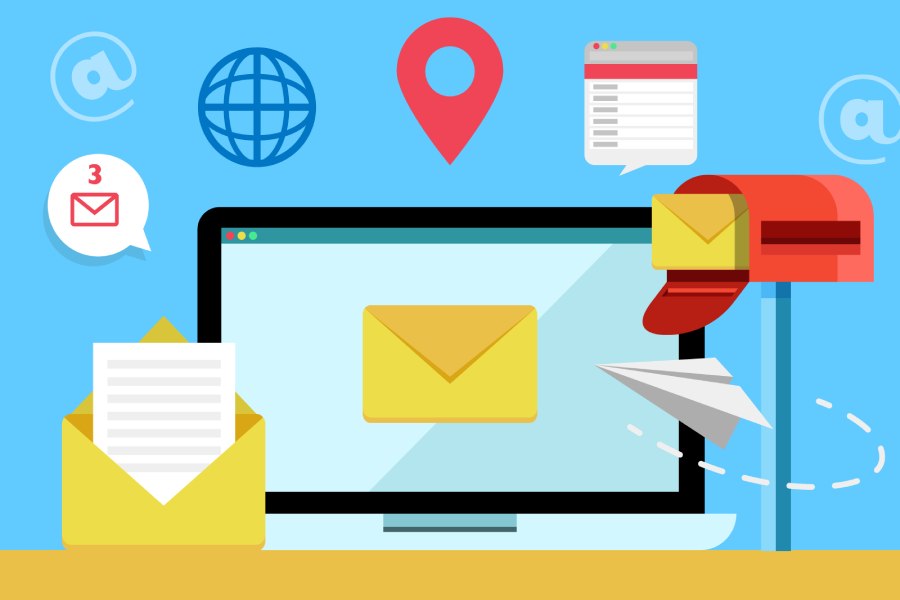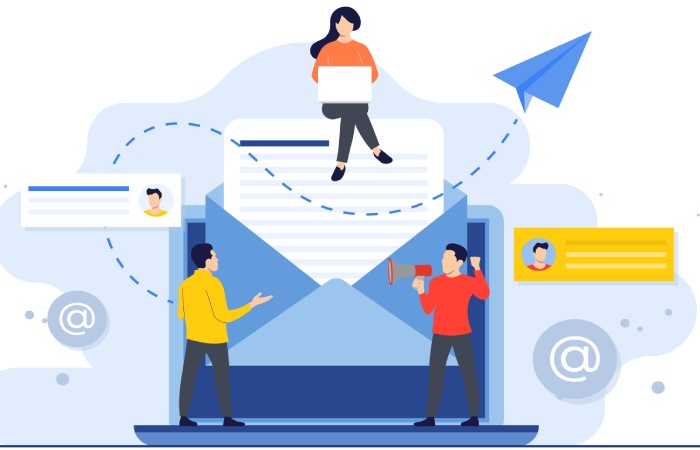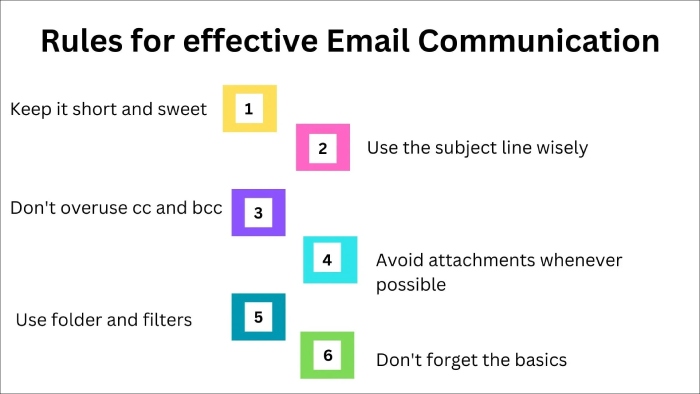The History of Email- Yesterday, Today, and Tomorrow!
Ray Tomlinson, a visionary, first introduced the concept of email in 1971. Since then, this online communication medium has undergone several changes and developments. Let’s delve into some of the intriguing backstories that narrate how email evolved into what it is today, all thanks to Tomlinson and his fellow techies’ pioneering work.
1971: Initial Conceptualization
Ray Tomlinson gets the credit for conceptualizing email while working on ARPANET, the federally supported research initiative that created the Internet. At that time, people could leave messages only for those working on the same computer. However, with Tomlinson’s brilliance, users could communicate with other computers linked to a network.
The @ symbol, which is also Tomlinson’s contribution to email, played a crucial role in the evolution of email communication. It was used to separate the user’s name from the computer’s name in the email address, a convention that is still in use today.
1976: The Queen Hit the ‘Send’ Button
In 1976, Queen Elizabeth II made history by becoming the first ever monarch to hit the ‘send’ button and send an email. This happened while she was visiting the Royal Signals and Radar Establishment in Malvern, England, and used the ARPANET.
This milestone symbolized her readiness to embrace technology and the rapidly advancing digital age.
1978: Spamming Began
Soon after the email was introduced, people crafted ways to use it to make money by sending unsolicited emails. Gary Thuerk was a famous name who was known for sending marketing emails to hundreds of ARPANET subscribers. He was later tagged as the ‘Father of Spam.’ He claims to earn around $13 million from sending marketing emails.
1978: The Email Program for the Other Inventor
There has always been a debate about who came up with the concept of email first. V.A. Shiva Ayyadurai, an Indian-American scientist and entrepreneur, claimed to have invented email as a teenager in 1978. He developed a software program called ‘EMAIL’ while he worked at the University of Medicine and Dentistry of New Jersey (UMDNJ).
However, Ayyadurai’s claims are controversial. Critics say email existed before his work and that creating electronic messaging was a team effort involving many researchers over several years. For example, ARPANET had electronic messaging in the early 1970s. Despite the debate, Ayyadurai’s contributions to email development are still significant in digital communication history.
1982: Organizing and Standardizing Emails
By the early 1980s, researchers and users felt the need to streamline email, so the Simple Mail Transfer Protocol (SMTP) was used to standardize the exchange of emails by mail servers. This concept is believed to be based on Tomlinson’s SNDMSG program from the ARPANET.
Later, Post Office Protocol (POP) and Internet Message Access Protocol (IMAP) were introduced to make email a more organized medium for communication.
1988: Outlook’s Predecessors
Microsoft Mail, or MSMail, introduced in 1988, is considered a forerunner to Microsoft’s later email programs like Exchange and Outlook. MSMail was Microsoft’s first network-based email system, designed for use within corporate environments. It provided essential email functionalities, including message sending and receiving, contact management, and storage, setting a foundation for more advanced features in subsequent versions.
1989: Elwood Edwards’ Voice
If you used emails during the 1990s, you would surely get nostalgic when we remind you of AOL’s iconic phrase—‘You’ve got mail!’ This recording notified users of new emails and was in the voice of Elwood Edwards, who worked at a radio station at that time. His wife was an employee at AOL when she requested him to record a few lines for her.
Edwards’ voice contributed significantly to AOL’s brand identity and nostalgia for the era of dial-up connections and the burgeoning online community. His simple yet memorable phrases are fondly remembered as a defining element of the internet’s formative years.
1991: In Space Email
The 1990s saw the rapid expansion of email, which was facilitated by computers’ easy accessibility. In 1991, an email milestone occurred when the crew of the Space Shuttle Atlantis sent the first email from orbit using a Macintosh Portable.
This historic email was sent during the STS-43 mission and was addressed to a ground-based system. The message humorously stated, “Hello Earth! Greetings from the STS-43 crew. This is the first AppleLink from space. Having a great time, wish you were here…send cryo and RCS! Hasta la vista, baby…we’ll be back!”
1992: Emails Became More Than Just Words
Then came the turn for Multipurpose Internet Mail Extension (MIME), which made emailing more flexible, fun, and inclusive. Users could include characters other than ASCII, and what was even better was that they could send images, audio, and videos.
1992: Email Formatting Became a Thing
This was the year when CompuServe’s CompuServe Information Manager software, which had a feature called ‘Rich Text Email‘, made it possible for users to format emails without knowing how to code. Before this, emails were plain text and lacked rich text or visual formatting.
This advancement allowed users to format their emails with different fonts, sizes, bold, italics, underlining, and embedded images. These features enhanced the visual appeal and readability of emails, making electronic communication more expressive and user-friendly.
1993: Webmail Was Introduced
Back in the day, email required specific software. Then, considering its rapid growth, Phillip Hallam-Baker, a cybersecurity specialist at CERN, created the first webmail iteration, but it was only a test and never released to the public.
1996: Webmail Users Increased
More people started accessing emails from webmail. The prominent free webmail services of that time were Hotmail and RocketMail (now called Yahoo! Mail)
1998: Spam Made the Entry in Dictionary
By this time, email menaces had become so common that the New Oxford Dictionary included the word ‘spam’ and some other internet phrases.
2002: Wireless Email
In 1999, Research In Motion (RIM) launched the BlackBerry 850, the first device that enabled wireless emailing, revolutionizing mobile communication. The BlackBerry 850, initially a two-way pager, allowed users to send and receive emails on the go, which was groundbreaking at the time.
2004: Gmail Reshaped the Landscape
When Gmail was launched in 2004, unlike other existing email providers, it offered 1GB of free storage space per user, which was a big deal at the time. This feature meant that users did not have to meticulously manage their inboxes to avoid running out of space.
Gmail also introduced a powerful and fast search functionality, allowing users to easily find specific emails amidst their growing inboxes. Its innovative use of ‘conversations’ grouped related emails together, making it simpler to follow email threads. Additionally, Gmail’s clean, user-friendly interface, combined with features like labels for organizing messages and robust spam filtering, significantly enhanced the user experience.
2012: Barack Obama’s Re-election Campaign
In 2012, Obama’s campaigns used emails to reach out to millions of voters with personalized messages, fundraising appeals, and calls to action. The campaign’s success not only highlighted email’s versatility and effectiveness but also encouraged other organizations, businesses, and political entities to adopt similar email strategies.
2018: Privacy Protection
While the introduction of email privacy regulations became a headache for businesses, it is because of these policies only that recipients are safer. Well, not only recipients but also businesses that send emails stay protected against phishing and spoofing attacks attempted in their names.
2020: COVID Made Major Shifts
During the lockdown, remote work became the new normal, and that’s when email became all the more useful. With the sudden shift, email was no less than a lifeline for businesses, educational institutions, government bodies, and individuals to stay connected to maintain operations, manage teams, and communicate with clients.
Companies pivoted to digital marketing strategies, using emails to reach customers with updates, promotions, and critical information about service changes due to the pandemic.
Final Words
While email communications are here to stay and rule, phishing attacks also come as part of the package. So, it’s better that you don’t wait for an attack to start with email security drills. Get in touch with our team to learn about email security protocols—SPF, DKIM, and DMARC. Their strategic deployment and management keep phishing and spoofing attacks at bay!


